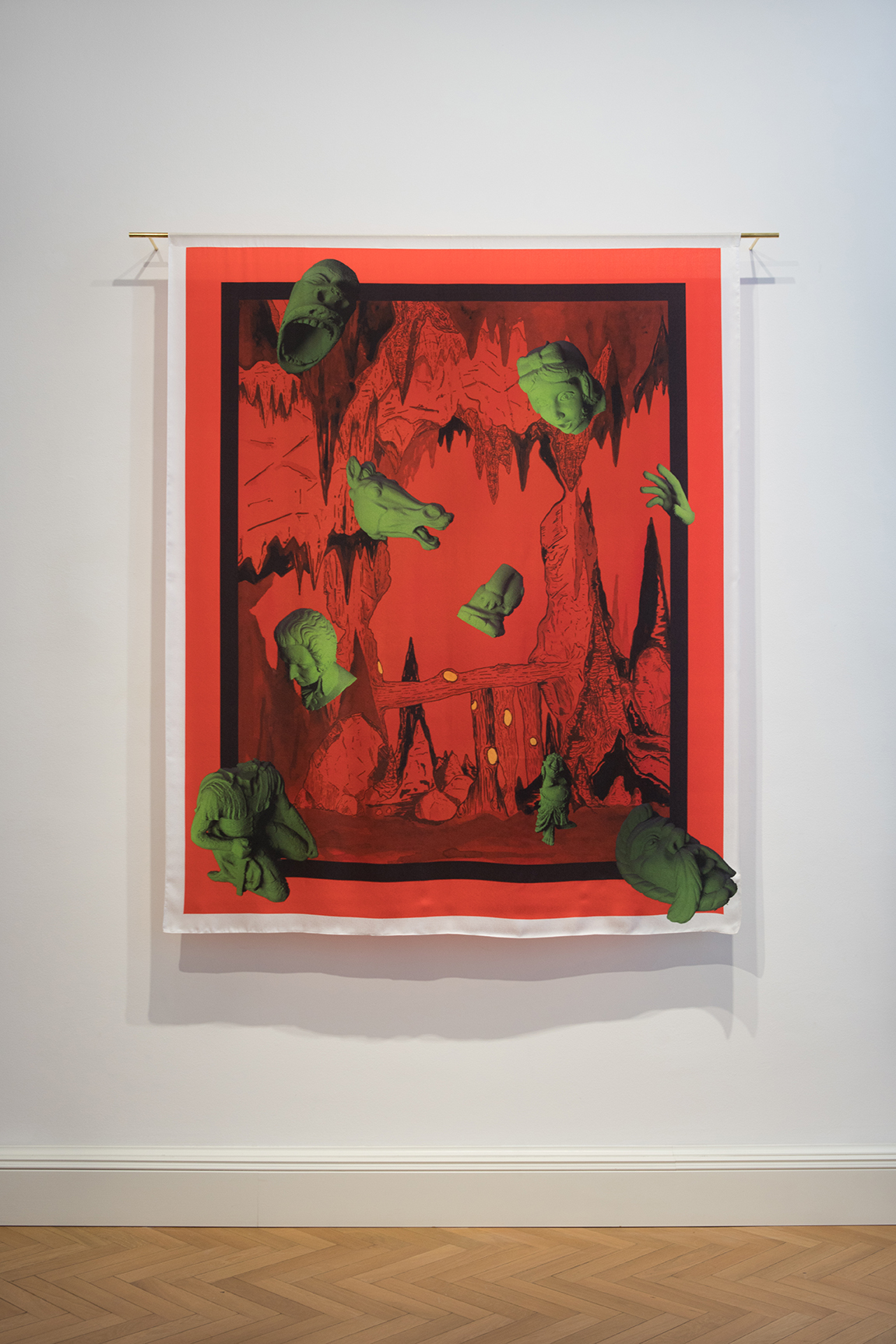Lucciole Nella Terza Natura
Cristóbal Gracia





Viasaterna presents Lucciole nella terza natura, first solo show of Cristóbal Gracia (Mexico City, 1987) in Italy, in collaboration with Bikini Art Residency.
The techniques employed by Gracia are often anchored to the context and the territory of production. The collaborative approach adopted by the artist allows him to explore multiple processes, spanning from handicraft to industrial and from manual to digital. Therefore, Lucciole nella terza natura combines a wide range of scales, materials, and media: mix-medium sculptures, a series of photographs, a series of drawings and a silk printed fabric. The photographs are compositions, found or staged, which contribute to the artist’s narrative as evidence or theatrical sets. Three sculptures can be referred as “living grottos”, made of concrete and named De Monstris, taking shape from a layering of associated elements such as concrete statues, garden furniture, pyramidal memorials, and rationalist architecture. Other sculptures are stalagmites, a grotto’s unmissable protagonist, sedimentations of meanings made of casted glasses with concrete stone-like bases. The mixture of glasses, that has the propriety of changing color through artificial lightning, recalls the fascination sparked on us by the sight of fireflies. The Lucciole are chosen by the artist to represent the idea of innocence and resistance. This enigmatic presence radiates light and hope on the exhibition’s reflective journey. It refers to La survivance des lucioles (2010), Georges Didi-Huberman’s response to the pessimist nihilism of Pasolini’s L’articolo delle Lucciole (Corriere della Sera, 1th of February 1975).
Until Friday 16th of October 2020
The techniques employed by Gracia are often anchored to the context and the territory of production. The collaborative approach adopted by the artist allows him to explore multiple processes, spanning from handicraft to industrial and from manual to digital. Therefore, Lucciole nella terza natura combines a wide range of scales, materials, and media: mix-medium sculptures, a series of photographs, a series of drawings and a silk printed fabric. The photographs are compositions, found or staged, which contribute to the artist’s narrative as evidence or theatrical sets. Three sculptures can be referred as “living grottos”, made of concrete and named De Monstris, taking shape from a layering of associated elements such as concrete statues, garden furniture, pyramidal memorials, and rationalist architecture. Other sculptures are stalagmites, a grotto’s unmissable protagonist, sedimentations of meanings made of casted glasses with concrete stone-like bases. The mixture of glasses, that has the propriety of changing color through artificial lightning, recalls the fascination sparked on us by the sight of fireflies. The Lucciole are chosen by the artist to represent the idea of innocence and resistance. This enigmatic presence radiates light and hope on the exhibition’s reflective journey. It refers to La survivance des lucioles (2010), Georges Didi-Huberman’s response to the pessimist nihilism of Pasolini’s L’articolo delle Lucciole (Corriere della Sera, 1th of February 1975).
Until Friday 16th of October 2020

